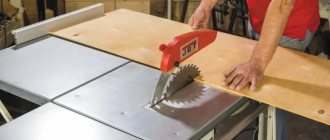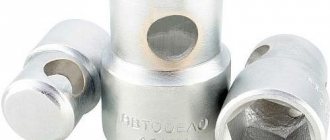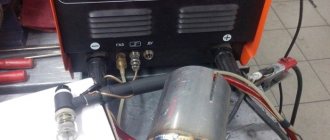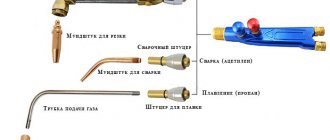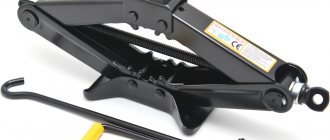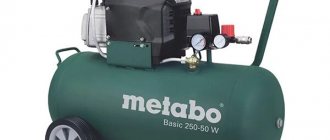In the arsenal of a home craftsman there are quite a few different tools designed to perform various operations. One commonly used is wire cutters. Many people are well aware of the purpose of this tool. It is mainly used for cutting wire. Its work is based on the principle of leverage. By using metal cutters, you can increase the effort required to cut materials. As a result, cutting the wire into pieces of the required length can be done without much effort. This device will be discussed later in this article.
What are wire cutters used for?
The main thing these hand pliers are used for is cutting wires and wires . They can also be used to cut other metal materials. Also, you cannot do without this tool in cases where it becomes necessary to make small cuts in plastic. This is often required when installing or dismantling equipment. If you have wire cutters in your arsenal, then when you need to cut a wire or cable, you can cut a wire of almost any diameter, but not too large, without any serious physical effort.
To make this task easy, you need to keep the wire very close to the hinges of the cutters when cutting cables. Currently, there are two types of metal cutters:
- lateral;
- end
The peculiarity of side cutters is that their handles with cutting edges are always located in the same plane. Sometimes a small angle is allowed between them. Metal cutters of this type have a second name - side cutters.
Hand cutters are called end cutters, in which the cutting edges to the planes of the handles are located perpendicularly. In some ways, wire cutters are similar to scissors. However, they have serious differences. The main thing is that the cutters have cutting jaws. This tool also differs from scissors in its shape and size. If a specialist is faced with the task of making cuts on cables of large thickness, then in this case, to effectively solve this problem, professional power cutters . These pliers are often called bolt cutters.
Types of wire cutters
Based on the type of design of the working parts of the tool, there are 3 types of cutters: end cutters, side cutters and bolt cutters. All types of presented wire cutters can be purchased in the GSM kit online store. You can choose the kuachki yourself on the page https://gsm-komplekt.com/category/kusachki-bokorezy-/.
End
End cutters
They are used during installation work, in construction, and when laying electrical networks. For the manufacture of the working element, reinforced steel with a chrome-plated surface is used. The cutting edges of this type of nippers are highly durable and are sharpened in a special way, which ensures high-quality performance of the work for which they are intended. The tool handles, made of dielectric, are resistant to high operating voltages.
Side cutters
The working element is at an angle relative to the tool head. The operating efficiency of the most powerful cutters of this type is ensured by additional reinforcement and hardening with high-frequency currents. Various models of products are available that can cut wires made of different metals and having different thicknesses, from aluminum to steel.
For diagonal wire cutters designed for cutting steel wires with a thickness of 1.2 mm, those made of mild steel - no more than 2.0 mm, and copper wires whose diameter does not exceed 2.6 mm, the heads are located at an angle to the surface of the handle. The hinge on the axis, which ensures the mobility of the working parts of the tool, is highly resistant to the constant impact of monotonous loads.
For the manufacture of professional side cutters, tool steel is used that undergoes heat treatment and multi-stage hardening. The handles of this type of nippers are comfortable to grip and can withstand impact forces of up to 75 kg.
Special nippers
One of the varieties of this type of cutting tool is bolt cutters. They are designed for cutting rods whose thickness does not exceed 12 mm. Representing a double lever in design and equipped with long handles, they first apply the applied force to an intermediate link that increases its value, and then to the cutting surface.
Another type of special cutters are products used for cutting small electronic parts. They have a mirror surface, open evenly, and are equipped with a device that removes static electricity. After watching the video presented to your attention, you can get acquainted with information about power cutters used for working with reinforcement.
Features of the cutter device
Regardless of the type of these tongs, they contain the following parts:
- sponges with cutting hands. They may vary in their shape;
- screw lock. Depending on the type of forceps, it can be single or double;
- a handle with reinforcing stops;
- leaf return spring.
A special lock is used to connect the jaws to the working parts. The lock has a reinforced design, especially in types of tools designed for cutting reinforcement.
These pliers have a leaf spring between the handles. With its help, you can easily return the jaws of the cutters to their original position or transfer them to the working position immediately after cutting the wire. When using needle-nose pliers, the cutting edges always close very tightly throughout the entire tool. The swivel joint used in this tool has an easy and smooth operation. This is done so that when cutting cables using pliers, the specialist does not have to exert any serious physical effort.
Types of wire cutters
When performing work, specialists use various types of forceps .
- Needle-nosed pliers with straight jaws are often used. Another name for them is blades.
- There are also tongs with oval jaws, which are divided into two types - straight and curved along the edge and along the plane.
- There are also hand cutters with semicircular jaws. Quite often this tool is direct. In certain areas, models of pliers with short or rectangular jaws are used to perform certain jobs.
Types and design features
You need to choose nippers depending on the result you plan to get in the future. The design of the cutters consists of the following elements:
- a handle that allows you to comfortably hold the tool;
- working part.
Depending on the shape of the cutting “jaws”, features of their location, size, nippers are divided into the following types:
- End
- Side cutters.
- Bolt cutters.
To ensure electrical safety when working with electricity, manufacturers use insulating materials when making handles. They will protect your hands from high voltage or electric shock. Depending on the design of the handle, pliers can be insulated or insulated.
Nippers with an insulating coating are made of dielectric, and for a tool that has an insulating coating, it is equipped with cutting inserts. The structure of the handles was designed in such a way that they are similar to guide levers, the surface does not slip or wrinkle, and is resistant to high humidity and technical oils.
End
End cutters are usually used when performing installation work in construction or in the process of laying electrical networks. The working element is manufactured from reinforced steel with a chrome-plated surface. The cutting jaws are quite durable and are sharpened using special technology.
Professional end cutters
This affects the performance of work at a high level. The handles are made of dielectric and therefore are resistant to high levels of electric current.
Side cutters
The location of the working element in side cutters is at an angle relative to the tool head. The most powerful nippers ensure efficient work by creating additional forces and hardening with high-frequency currents.
Dielectric side cutters
Professional side cutters are made from tool steel, which undergoes additional heat treatment and multi-stage hardening. The handles of this tool are quite convenient and comfortable to grip. They can withstand impact forces of up to 75 kilograms.
Bolt cutters
This tool is used for cutting wire or rod 12 mm thick. They have long handles and their design resembles a double lever.
Bolt cutters allow you to cut thick wires
During operation, you will notice that they first apply the applied force to the intermediate link. It increases its value and transfers force to the cutting part.
How to find good metal cutters?
Selecting a quality tool means being able to effectively and easily complete the task of cutting cables and other elements. You can determine that the tool you decide to purchase is of high quality based on several criteria .
Signs of quality wire cutters
There are no dents on quality cutters.
There should be no burrs or other defects. The cutting edges of these pliers should touch tightly in the middle.
Another important point is that the cutting edges should not overlap each other. The cutters may have a detachable type screw lock. However, instruments with such locks are very rare. Most often, wire cutters are offered with permanent locks.
When choosing a quality tool for home use, you should also pay attention to the lock of this tool. It can be single-hinged or double-hinged. The tool, which is equipped with a double-hinged lock, allows the specialist to reduce the force that develops on the tool handles. When choosing, you should be aware that it would be useful to have a return leaf spring in the tool. Thanks to it, the working edges automatically return to their original position. This happens immediately after the pressure is completed.
Manufacturers specializing in the manufacture of hand cutters think not only about the safety of this tool, but also about the ease of use. , an insulating winding is used in manufacturing . This makes it possible to use this tool not only for cutting cables, but also as an electrical installation tool when working with high voltage cables.
According to such criteria as the presence of insulating materials, wire cutters are divided into:
- insulating;
- isolated.
A characteristic feature of insulated handles is their coating, which ensures safety when performing electrical installation work. The handles of insulating tools are made entirely of insulating materials. Only the cutting edge inserts in this tool are made of metal.
Requirements for materials for making tools
When choosing this tool, attention should be paid to the material from which the pliers are made:
- was indestructible;
- had good resistance to moisture;
- was resistant to oil and gasoline;
- didn't slip.
Manufacturers of these hand tools also ensure that wire cutters designed for electrical work have a good degree of electrical insulation and provide reliable protection against electric shock within the limits corresponding to the insulating materials used in the manufacture of the tool.
How to use wire cutters?
To ensure that working with wire cutters does not require a specialist to exert great physical effort, you need to know about some rules and features of using this tool. It is necessary to install metal cutters at an angle of 90 degrees There is no need to try too hard when performing work, as this can lead to excessive force on the cutting edges of the tool. When performing work, special attention must be paid to the cutting process itself, as well as the movement of the tool.
If, when cutting cable wires, the tool moves in a direction that is unsafe for people, then in this case you should release the handle or simply turn the tool in a different direction.
The task of cutting massive elements, such as beams or hinges, can be performed efficiently if the materials are cut in a recess. It is often provided in the cutting part of the wire cutters.
When cutting material, it is necessary to close the cutting part . If the jaws separate, then work should be stopped, otherwise the jaws of the pliers may break. When cutting passive elements, you cannot do without an assistant. During the work, it will support the element being cut and move it to a safe distance.
Scope of application of cutters
Nippers are a universal cutting tool whose function is based on the lever principle. Using cutters it is possible to cut material up to 5-7 mm thick.
Therefore, wire cutters are successfully used for cutting wire, wires, cables, metal and plastic. The scope of application of wire cutters is varied: installation and dismantling of equipment, as well as electrical work. By what criteria should you choose a cutting tool, taking into account their area of application?
How to sharpen wire cutters at home?
Wire cutters are a tool that is present in the arsenal of every home craftsman. When using it for a long time, it becomes necessary to sharpen it. You can do this work on your own, without turning to specialists. To do this, you should get a sharpener. And in order not to encounter serious problems when sharpening, it is best to purchase a special device that has a rotating circle. You can buy an electric sharpener , but a device equipped with a manual drive will do just fine.
You should not process elements at the end of the circle, otherwise they will simply fly apart. The circle is designed in such a way that scattering is excluded in it. Using a block to sharpen wire cutters is not the best solution. Of course, you will achieve your final goal, but this process will take you a lot of time.
It should be remembered that if a metal device is used for sharpening, then you will not be able to make the tool sharp with its help.
When starting to sharpen a tool, it is necessary, first of all, to close it, and then bring the nippers close to the circle with the back side - the one whose surface has a concave relief. The tool should be lightly pressed by hand against the rotating circle, and then rotated at a slight angle. This will ensure good sharpening of the spaces between the blades .
If during sharpening you find that the area between the blades is shiny, then this indicates that it is well processed. To prevent the tool from becoming dull in the future, you should handle them correctly. Do not use wire cutters to cut steel products. They are not even suitable for cutting paper clips. The main purpose of wire cutters is to cut copper and aluminum wires. They can sometimes be used to cut steel-insulated wires. But you can do this job without using this tool. It is enough to use a regular knife.
